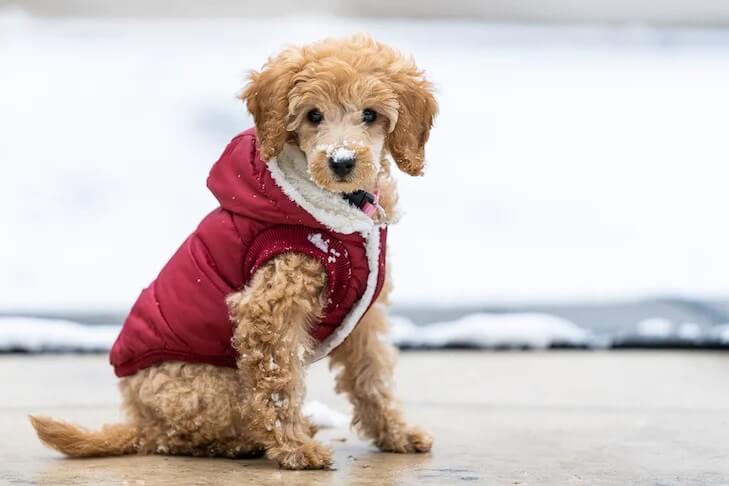
8 Ways to Stop Your Dog from Pulling on Leash
Teaching your dog to comfortably walk by your side on a leash can be of the best things you teach your dog. Creating this understanding will help you to enjoy your walks with your dog, which will, in turn, mean your dog gets more walks and is generally healthier and happier.

Why is Leash Training Important?
Waking an untrained dog who is pulling you in every direction is downright exhausting and can be quite embarrassing. It quickly turns the walk into a struggle, and you begin to wonder who is walking who. It won’t take long before you begin wishing you had not taken the dog on a walk at all.
If your dog is constantly pulling on the leash, it can be harmful to his neck and windpipe. A dog who is out of control on a leash can also present a danger to other bystanders or passing motorists. So it’s safe to say there are a LOT of reasons to have your dog behave on a leash. Our next step is to look at some of the main causes of dogs pulling.

Causes
The biggest reason for your dog pulling is often high energy. Our beloved dogs LOVE to get out and see the world, and maybe not get to do so as often as they would like. So when it’s time for that long-awaited walk many go into an almost hyper state (I know you know what I’m talking about).
Some breeds just love to pull. These dogs were bred to pull and know it. Some of the better-known breeds who are natural-born haulers are; Newfoundlands, Greater Swiss Mountain Dogs, Bernese Mountain Dogs, Leonbergers, Huskies, and Saint Bernards. If you have one of these breeds or a mix of one, you may be looking at a longer road than most to a calm dog on a leash. But don’t give up, we’ve got some amazing tips and tricks for all breeds.

We also know that some dogs just want to be dominant, as simple as that. From St. Bernards to little Yorkies, some just want to be the pack leader. For these types, the training will take longer, and you may need to you EVERY trick in the book, so let's get into it!

8 Tips to Stop them Pulling
Calm Down – when they hear the word “walk” or see you grab the leash, they get excited, VERY excited. The key here is to let your dog calm down BEFORE you take him outside. Don’t put the leash on until your dog has calmed down. Once calmed down, put the leash on and calmly head for the door.
Inside Practice – Once you have the leash on, it’s important that your dog not pull you around inside the home. If he begins to pull, stand, and hold the leash. Wait again for him to calm before you begin again. This might take a few minutes, but soon you’ll make it to the door, and your dog will start to get the idea.
Go Through the Door First – One of the keys to being successful on the leash is being the leader. You’ve heard this before, and it’s important. For dogs, the leader goes first, and this includes going through the door. Make sure you always go through the door first; this will help set the tone.
Posture – As the pack leader, your dog will look to you for how to act. If you are excited, moving around quickly, they will mirror that. However, if you keep a calm, confident posture, your dog will take notice and begin to show the same posture.
Stop – Now that you are on your walk, you want to avoid the tug-of-war that you have had so many times before. Instead of continuing that, do just like you did in the house. This will break the cycle and quickly get your dog’s attention. One he’s stopped pulling and focused on you, begin the walk again.
Change Direction – As with stopping, a change in direction can help snap your dog back to the now and what you are wanting. If your dog in on your left side and pulling ahead, take a 90-degree turn to the right. This now puts you in the lead and your dog behind you. Do this several times, and your dog will start to realize you are choosing the direction, not him.
Treats for Good Behavior – As with many other facets of training, a well-timed treat can make all the difference. Make sure to have some treats on hand to give your pup when he’s doing the right thing. This will reinforce the good behavior that you are looking for.
No Pull Harness – For some of the more stubborn breeds or those who are bread to pull a no-pull hardness might be a good option to protect them from hurting themselves on your walk. These leashes will help to avoid injury with your dog who might need a little more time to learn the “ropes”.

Training your dog to walk calming on a leash with you can be hard, especially if your dog is mature and been misbehaving for years. This can be a hard habit to break so pace yourself and don’t expect everything to change quickly. It’s important to keep a good attitude, look for small changes and most importantly be consistent. As you do these things and continue to reinforce them your dog will come around and soon will be walking next to you comfortably.
You Might Also Like:
7 Basic Commands Every Dog Should Know

- Aug 20, 2019
- in Pet Blog






















































